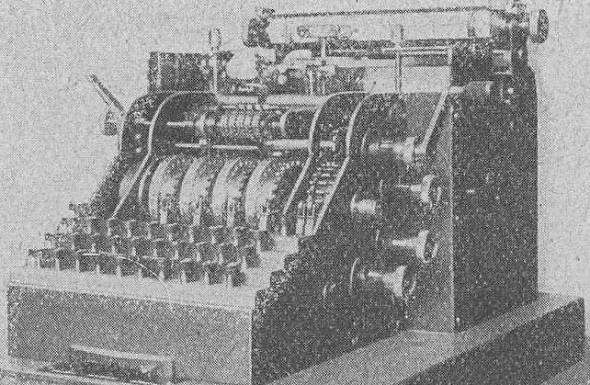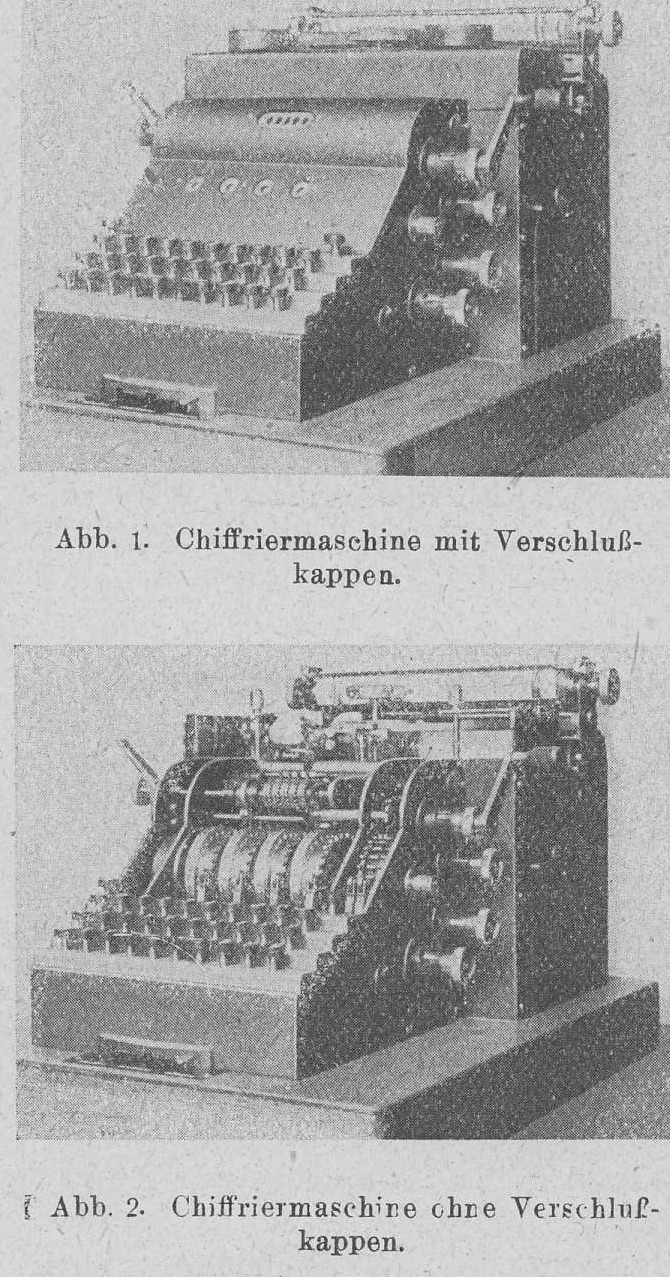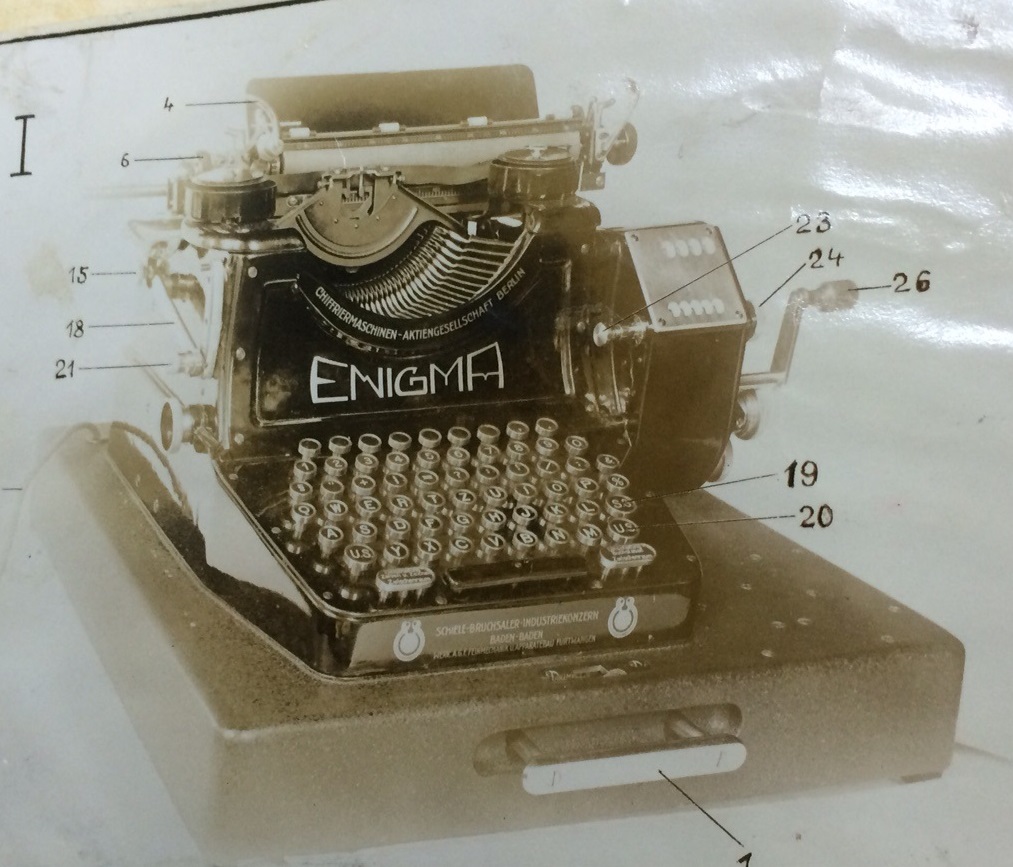The first Enigma models were complex and expensive. Only when Enigma inventor Arthur Scherbius simplified the design of his machine it became practicable.
If you see an Enigma encryption machine in a museum or private collection, it usually looks like this:
Enigmas usually have three or four rotors and they use a light panel to indicate letters but do not print them. However, before the Enigma became the machine we know today, its design underwent a number of significant changes.
The early days of the Enigma
The Enigma was invented by German Arthur Scherbius in 1918. As Dutch crypto history expert Karl de Leeuw found out, Scherbius took his idea from two Dutch naval officers, who had produced a rotor cipher machine as early as 1915. After several years of improvements, the first Enigma saw the light of day in 1923 (for more information check cryptomuseum.com). Scherbius’ early designs were encrypting typewriters (i.e., they printed the result of the encipherment or decipherment). The following model is named Enigma A:
The Enigma A featured four rotors with 28 electrical contact points each. It didn’t have a reflector.
The following design (Enigma B), was an encrypting typewriter, too. The typebars and the carriage were probably “borrowed” from a standard typewriter. The following picture is available in the UK National Archives (file HW 25/6), it was provided to me by Dermot Turing:
The rotors of the Enigma B had 26 contact points each. There was no reflector. As it seems, Scherbius thought that four rotors were not enough, so he equipped the Enigma B with eight rotors.
The following design (Enigma H) has eight rotors, too (courtesy of the National Cryptologic Museum):
Simplifications made the Enigma successful
However, these early Enigma designs were clearly too complex. The printing mechanism and the high number of rotors proved very error-prone. In addition, these early Enigma’s were too expensive to be successful on the market.
Only when Scherbius and his staff decided to simply their machine it became practicable. As an important simplificaton, they cut down the number of rotors to three. In addition, they replaced the typewriting mechanism with a (much cheaper and more robust) light bulb panel.
The following Enigma model was launched in 1926. It is is also referred to as the “commercial Enigma”. It looks pretty much the same as the Enigmas later used by the German military. I features three rotors and a reflector:
Scherbius tried to sell the commercial to enterprises, banks and state agencies, but he was not very successful. Only in the early 1930s, when the German military started using the Enigma on a large scale, it became a success. For Arthur Scherbius this came too late. He died in 1929.
Help required
The information provided in this blog post was taken from the cryptomuseum.com site operated by Marc Simons and Paul Reuvers. While there is plenty of information about the Enigma H and later models, still little is known about the models A and B. On their site, Marc and Paul write:
Help required
At present, no further information about the Enigma A / Enigma B is available. If you have any information that is not already on this [the cryptomuseum.com] page, please contact us. We would also like to know whether any Enigma B models have survived, so that they can be researched further.
If you have any additional information about these early Enigma models, please let me know.
Follow @KlausSchmeh
Linkedin: https://www.linkedin.com/groups/13501820
Facebook: https://www.facebook.com/groups/763282653806483/
Further reading: A fascinating report of Enigma’s contemporary witness, Max Rüegger








Kommentare (2)